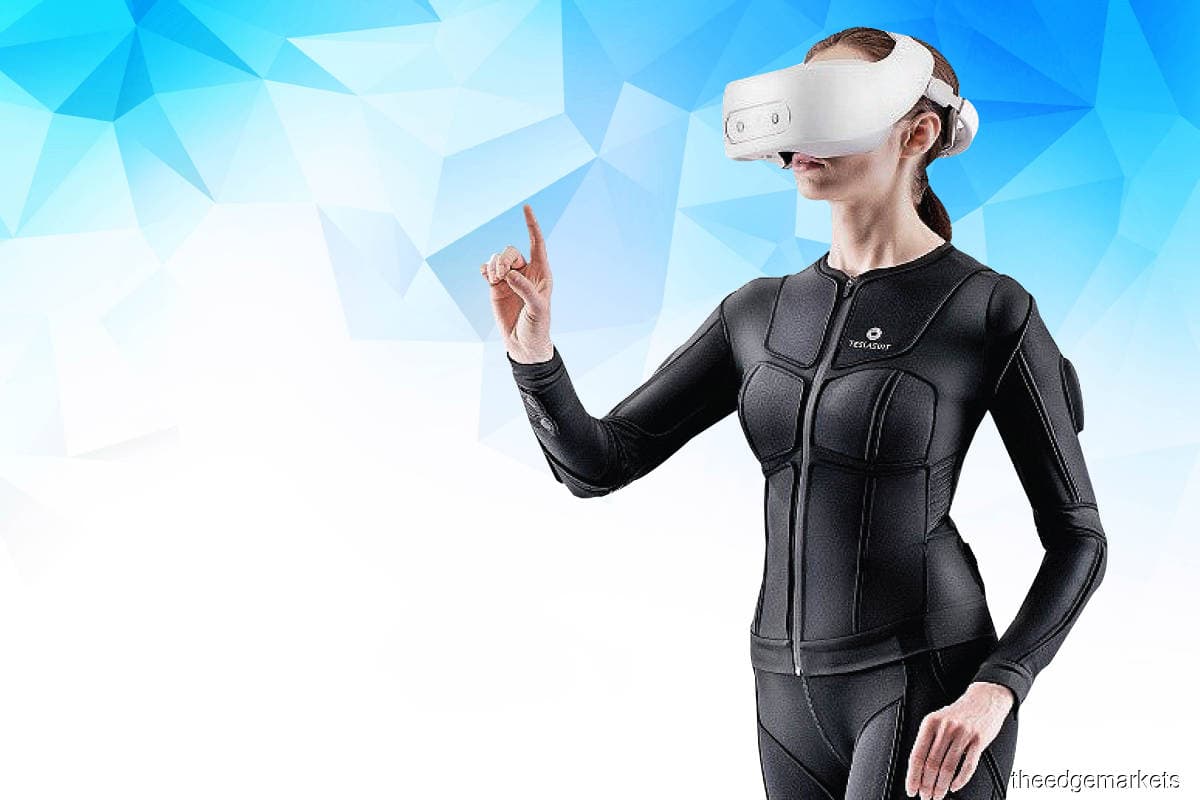
This article first appeared in Digital Edge, The Edge Malaysia Weekly on October 11, 2021 - October 17, 2021
What is the one thing many people miss in this chaos, otherwise known as the pandemic? Physical touch. People walk around masked and are required to keep a social distance from one another, being shamed over the media (or social media) if they are caught flouting these regulations.
But isn’t human touch a basic human need? Tiffany Field, director of Touch Research Institute — the world’s first research centre dedicated to studies on touch — has said in various interviews that physical contact is important.
She says touch reduces the production of stress hormones (such as cortisol) in the body and strengthens the immune system by increasing a person’s natural killer cells. Physical contact also results in the release of oxytocin, making people more cooperative and trusting.
This lack of tactile stimulation alone is found to result in an increase in stress, anxiety, depression, fatigue, sleep disturbance and post-traumatic stress symptoms. How much more in a pandemic situation with social-distancing measures being enforced.
With the number of Covid-19 cases still on the rise, however, people may not wish to compromise themselves or their loved ones by seeking out actual physical contact. So, what can they do to assuage the pangs of skin hunger when human touch is not an option, especially for those who live alone?
This is not an idle question. United Nations statistics show that, in 2000, about 7%, or 1.4 million people, of those aged 60 and above lived alone. Although this figure has not been updated, it can only be assumed that, today, the number of older adults isolated at home is even greater.
The tech to assuage a profound human need
Danny Ng, a lecturer at the Department of Mechatronics and Biomedical Engineering of Universiti Tunku Abdul Rahman, says there are already technologies — robots and virtual reality (VR) — out there that can simulate physical contact such as hugs.
He suggests creating humanoid robots to simulate hugs, citing a few researchers, such as Alexis Block and Katherine Kuchenbecker from the Max Planck Institute for Intelligent Systems, who are already looking into it.
Block and Kuchenbecker, human-robot interaction (HRI) researchers in Germany, have created HuggieBot 2.0 (previously HuggieBot) to enable more studies into the interaction between humans and robots through a variety of activities, including hugs.
In Japan, researcher Masahiro Shiomi developed a robot resembling a giant teddy bear — which opens its arms when sensing the approach of people — in 2017 to study the impact of robot hugs.
Ng says each hugging robot should include three components: actuators (motor), haptic (relating to the sense of touch) technology and a camera system.
Here, robot programming is fundamental to work out the movement of actuators and feedback from various sensors. According to the robotic blog Robocademy, actuators are motors that enable movement in robot joints. With programming languages such as C/C++, Python, Java and C#, robots are able to pick up an object and move from place to place.
Haptic technology serves as feedback for actuators to move robot hands in the proper motion and force. The camera system, in this case, is part of the feedback system that tells the robot a human is approaching, so it can get ready to give them a hug.
Currently, one of the social robots available in Japan is known as LOVOT. Ng says social robots are a common-enough phenomenon in Japan — though, perhaps, not outside it. It may have something to do with demographics, as Japan has a larger proportion of elderly people compared with the rest of the world.
Meanwhile, Ng believes VR and haptic technology should be combined to simulate the hugging experience. He reasons that VR devices are more likely than robots to be common in households. After all, it is not convenient to bring a hugging robot anywhere.
With VR, people may visit a location virtually but experience it physically through interaction with their surroundings. Ng gives the example of the Oculus Quest 2 headsets — recently introduced by Facebook — that make VR technology more accessible than ever. Currently, an Oculus Quest 2 retails from US$299 (RM1,250).
Nevertheless, there are gaps to be filled in haptic technology itself, according to Ng. He says haptic suits are still in development whereas haptic gloves have been widely applied in technician training and gaming.
Prominent examples of haptic suits include TESLASUIT, which trains people in combat in a safe environment, and TactSuit, which allows gamers to immerse themselves in the gaming environment by creating tactile sensations. A TactSuit X40 retails at US$499.
Can robots or suits actually give you a hug, though? Ng says the suits may exert pressure in a way but does not simulate the actual sensation of hugging. Nevertheless, there is hope yet even if there is still a long way to go. Researchers are hard at work on haptic suits to iron out the kinks, so that they will be able to produce a lifelike touch sensation.
Simulated affection comes with its own set of challenges, though. “The biggest one is the production cost of full-body haptic feedback technology,” says Ng.
Because it is so expensive, most consumers have yet to come across haptic technology. The gadgets are mostly sold to organisations.
Although these technologies have been in development for years, there is still some ways to go. Hopefully, there will be something to show for it soon, to assuage the longing of millions of lonely people and help them deal with the side effects of touch deprivation.
Save by subscribing to us for your print and/or digital copy.
P/S: The Edge is also available on Apple's AppStore and Androids' Google Play.
